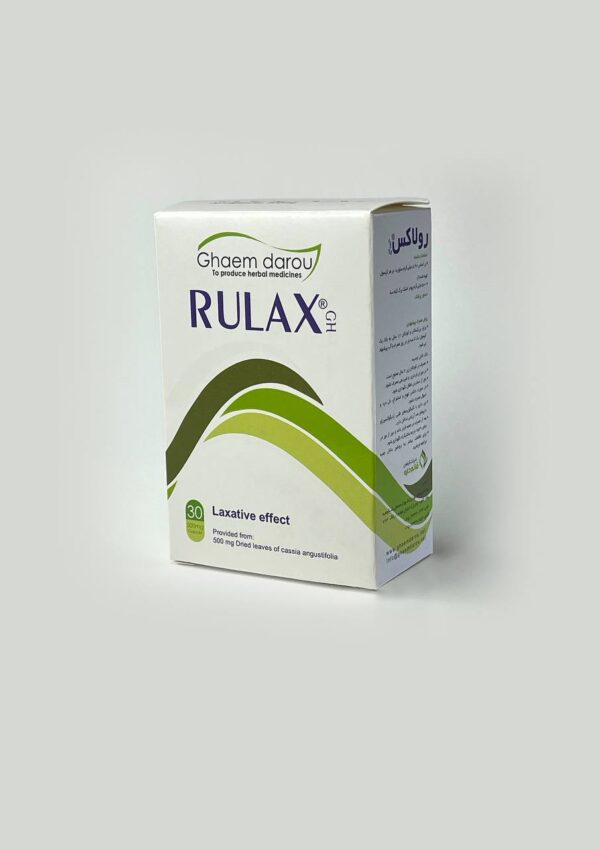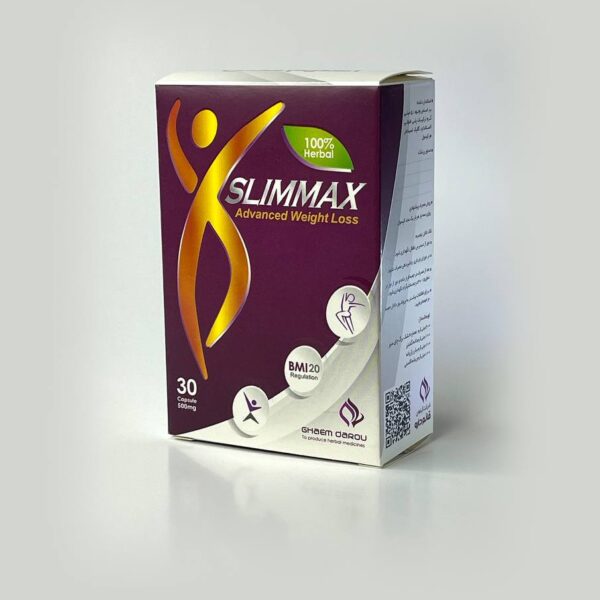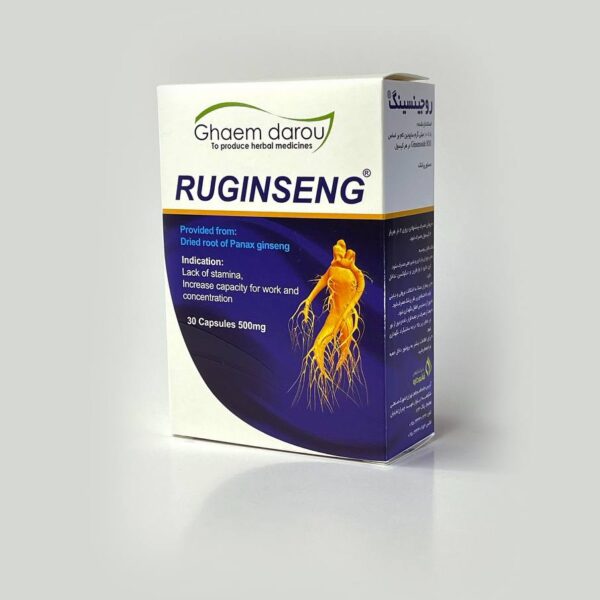Rulax – JH Capsule
Packaging Rulax:
30 capsules Rulax of 500 milligrams each, accompanied by a brochure
Plant used in the product Rulax:
Leaves of the Senna plant with the scientific name Cassia angustifolia
Product components Rulax:
500 milligrams of Senna leaf powder, standardized based on the percentage of anthraquinone glycosides, specifically Sennoside B (78.1% by weight), equivalent to 90.8 milligrams per capsule.
Intended use Rulax:
Senna has laxative and mild laxative effects, and it is used for the treatment of constipation.
Pharmacological Effects Rulax:
Senna leaf belongs to the category of stimulant laxatives. The anthraquinone glycosides of senna, after digestion, are hydrolyzed to form free and active anthraquinones. This process involves the absorption of a portion of anthraquinone glycosides in the small intestine, followed by hydrolysis in the liver, resulting in the secretion of active anthraquinones into the colon. Overall, the laxative effect is attributed to the stimulation of the enteric plexus by active anthraquinones, leading to increased colonic peristalsis. These laxatives take effect orally within 6 to 12 hours after administration and are excreted by the kidneys.
Dosage and Administration:
For adults and children above 12 years old, it is recommended to take one to three capsules daily, divided into one capsule per dose.
Contraindications and Recommended Precautions:
- This medication is contraindicated in case of hypersensitivity to the drug, presence of nausea, vomiting, diarrhea, symptoms of appendicitis, acute abdominal surgery, intestinal obstruction due to hardened stool, and other obstructive conditions, as well as non-specific abdominal pain.
- Pregnancy and Breastfeeding: Senna falls under category C and should not be used during pregnancy. Furthermore, due to the secretion of anthraquinone derivatives in breast milk, it should not be used during breastfeeding.
- Senna is prohibited for children under two years old, and children aged 2 to 12 years old should follow a doctor’s prescription.
- In elderly individuals, the prescribed dosage of the product is half of the usual dose. • Laxative products should not be used for more than one to two weeks without a doctor’s prescription.
- If you are using sedative or sedating drugs, consult your doctor before use.
Drug Interactions:
Senna may interact with cardiac glycosides such as digoxin, antiarrhythmic drugs, estrogen, indomethacin, nifedipine, potassium-lowering diuretics like furosemide and hydrochlorothiazide, adrenocorticosteroids, and licorice root.
Side Effects:
- Senna may cause mild abdominal discomfort such as colic or cramps. Prolonged use or exceeding the prescribed dose can lead to diarrhea accompanied by loss of water and electrolytes, especially potassium.
- Rare reports of cardiac arrhythmias, nephropathy, edema, bone fragility, hypogammaglobulinemia, clubbing of fingers, diarrheal colitis, melanin pigmentation of intestinal mucosa, and tissue damage exist with long-term use of products containing senna.
Storage Conditions:
Store away from light and moisture at a temperature between 15 to 30 degrees Celsius.
Sources :
1.PDR for herbal medicines, 4th edition: 684-688
2.Iranian Herbal Pharmacopoeia, pages: 455-446.

 Kidney and urinary tract
Kidney and urinary tract Digestion
Digestion glands
glands Ear nose and throat
Ear nose and throat Enhance sexual power
Enhance sexual power Fitness
Fitness Safety and health
Safety and health Women
Women Cardiovascular
Cardiovascular


